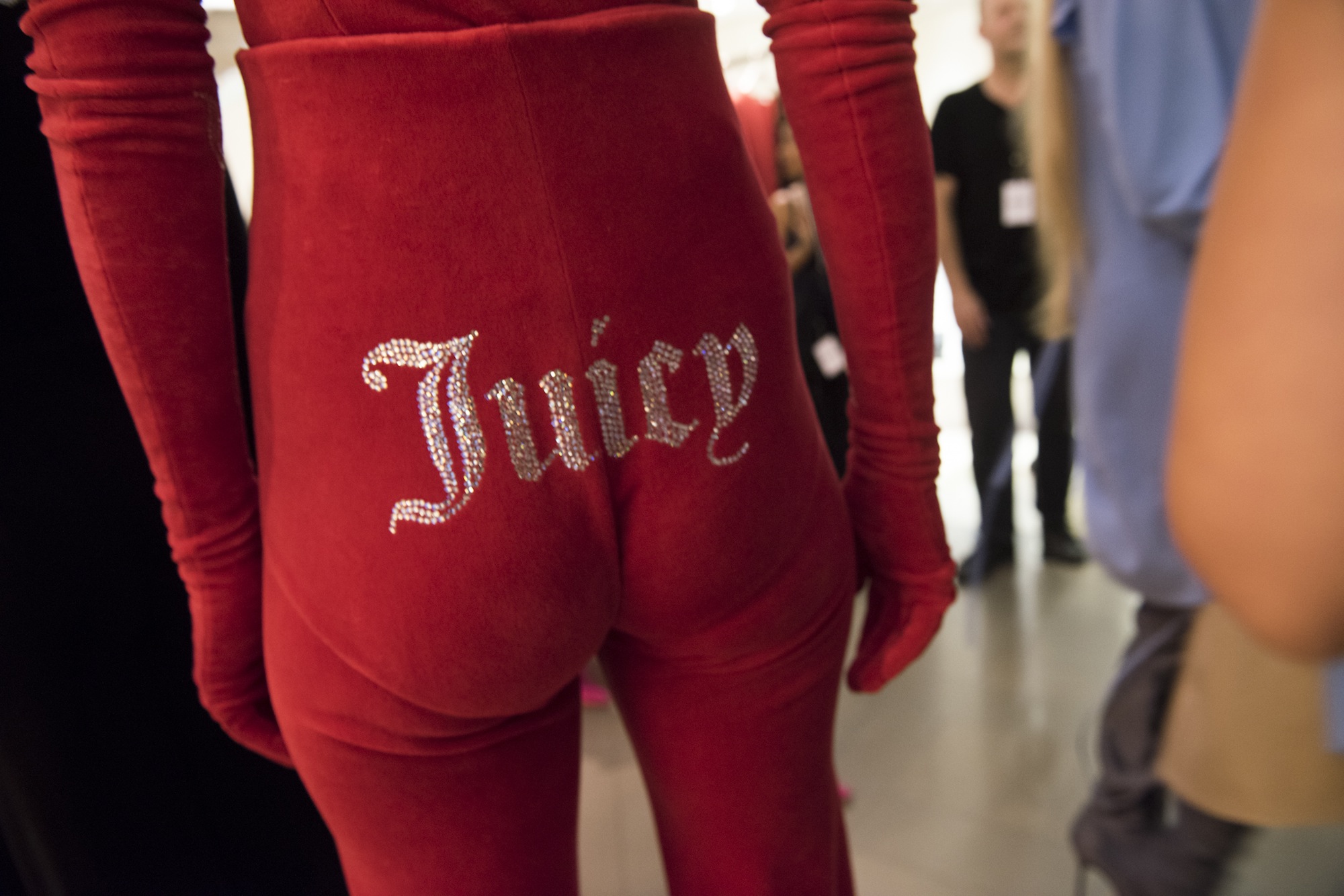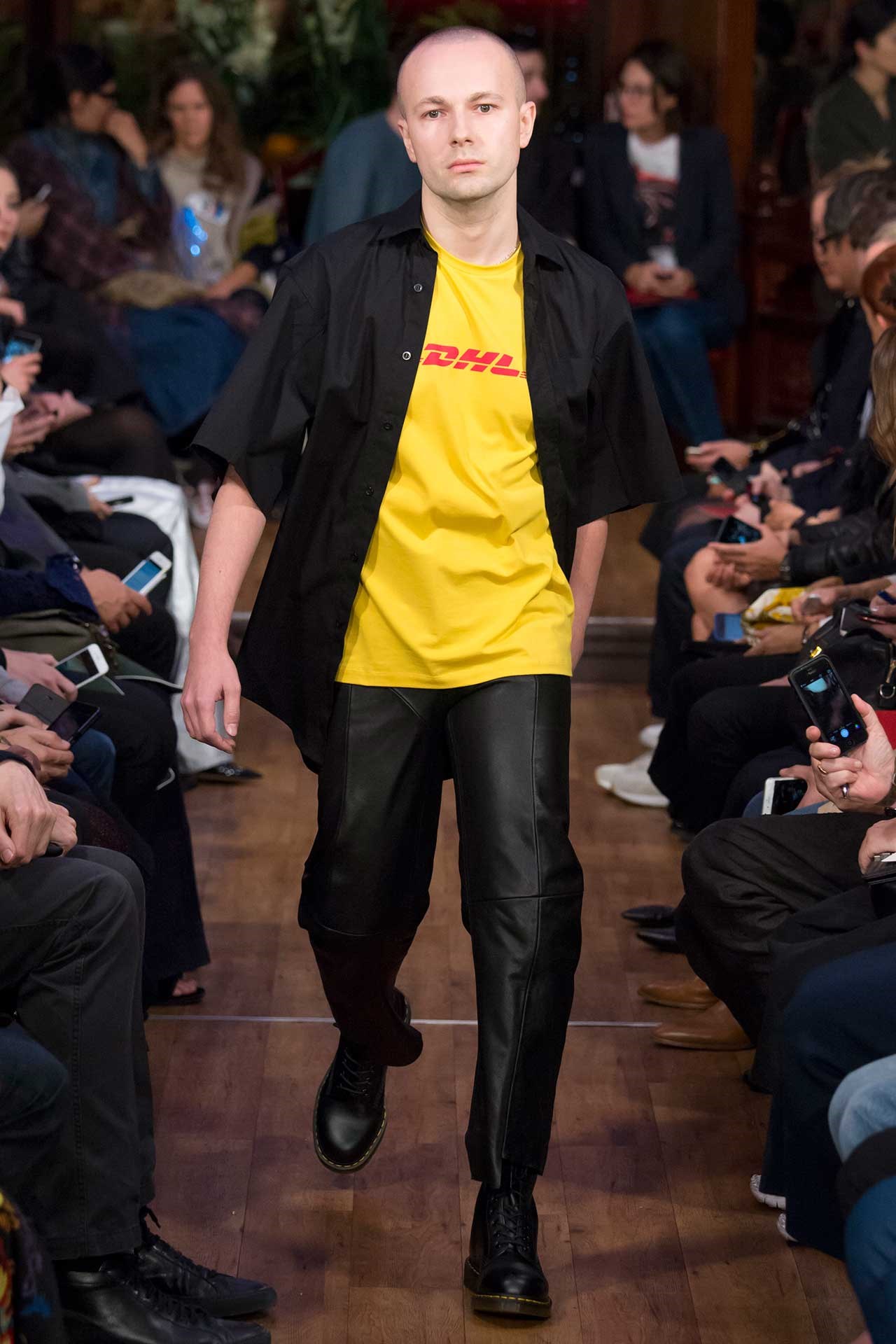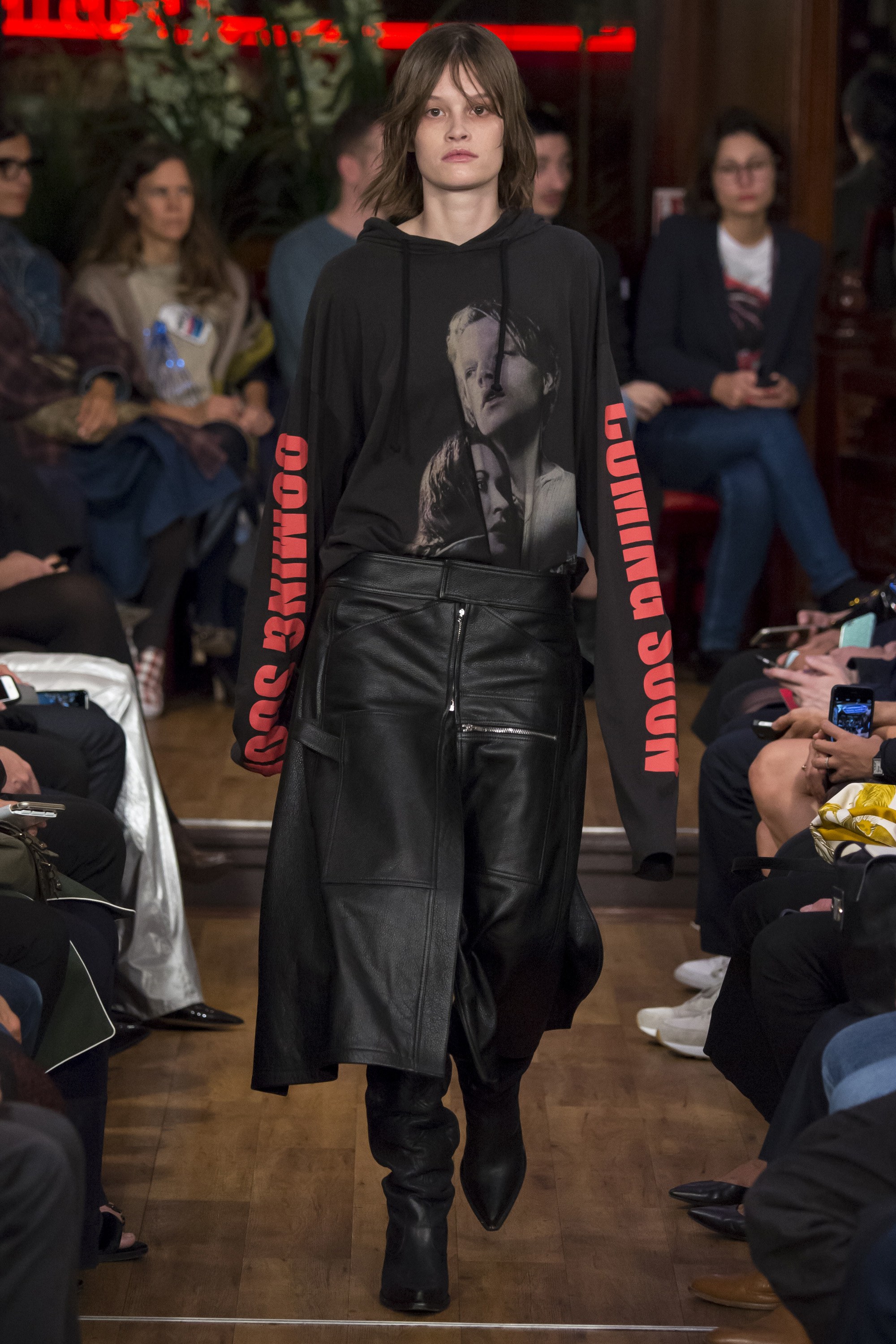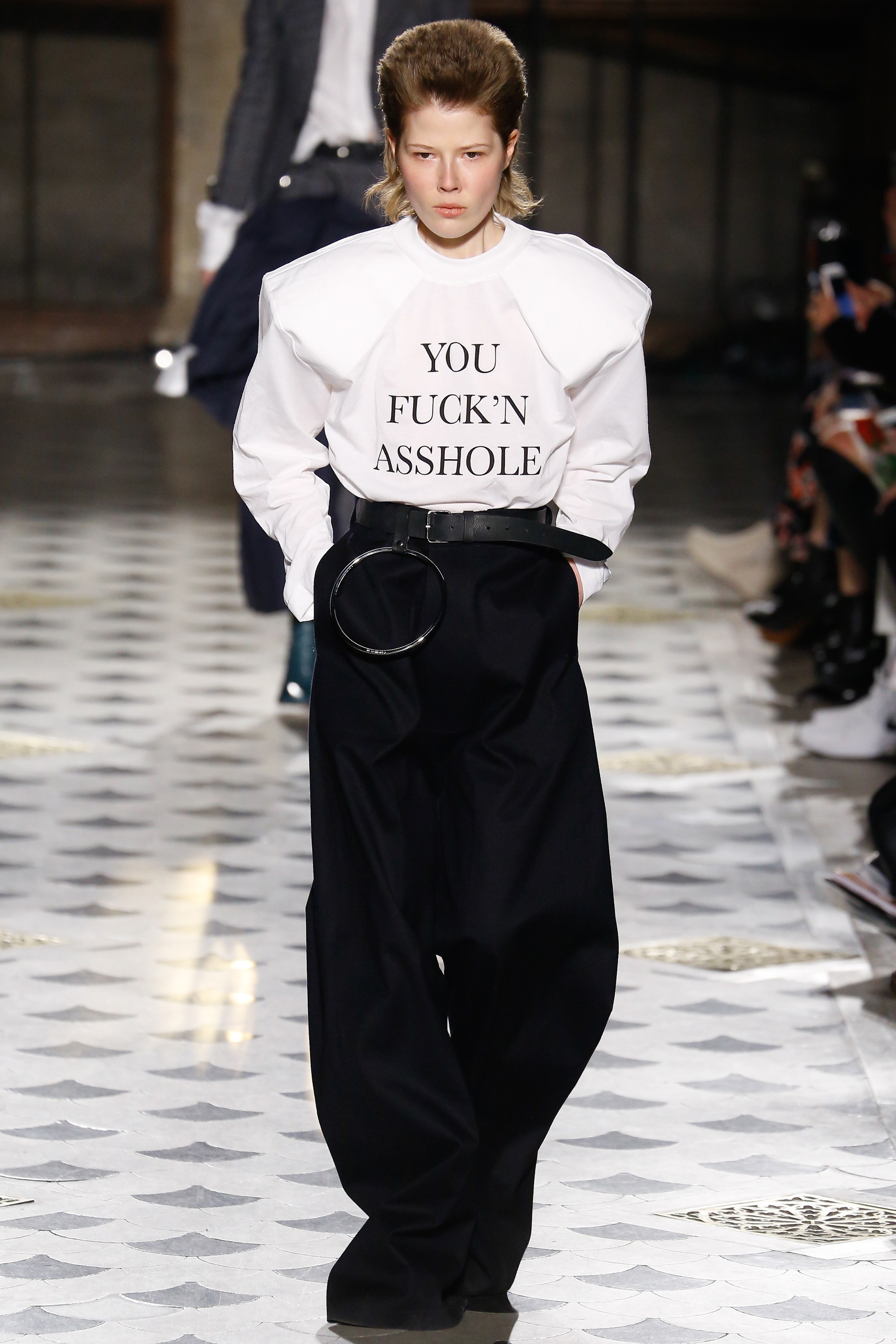Fashion Disruption: Vetements

Whether you love them or hate them (or in my case both) Vetements is riding the wave of flux and are flourishing under new circumstances, rewriting the rules of logistics, collaboration, and the often turbulent relationship between creative and management.
Change is in the air. From every corner of our global society whether it be politically, economically or socially there is uncertainty and instability unravelling in full force with most of us asking “How do we get out of this mess?” The tectonic plates of what we have believed or at least have accepted as our norm have shifted and we begin to reluctantly tiptoe into a new era possibly filled with revolution. I have always been mesmerised as to how fashion captures the zeitgeist and takes a sugarcoated snapshot of contemporary PESTLE forces, representing ideas and beliefs of the present, one day providing future generations reference of what went on. Hence we are living through a disruption period in fashion as well due to ch-ch-ch-changes from powerful forces in fast fashion, the lack of desire for certain products, inconsistent timing and seasonality of shows, social media and the dominance of e-commerce with new ways people purchase items today. That being said, there is no magic potion solution to tackle all of these problems at once- but one thing is for sure: each brand needs to reevaluate their own strategies and adapt to the new preconditions on the competitive landscape and no one is doing this better than Vetements.
Whether you love them or hate them (or in my case both) Vetements is riding the wave of flux and are flourishing under new circumstances, rewriting the rules of logistics, collaboration, and the often turbulent relationship between creative and management.


Vetements debuted in September 2014 with Georgian born brother super-duo at the helm: -Mario and Luigi - JOKES! Demna and Gurum Gvasalia the latter CEO and the former creative director. Impressively, within a couple of seasons, international press gushed about their rebellious aesthetic, comparing Vetements to the likes of Martin Margiela (where Demna trained) and as a reincarnation of the Antwerp 6. Think early 90s with low street fashion notes and atypical, asymmetrical tailoring. The brand quickly became one of the must-see shows of Paris (along with Chanel, Dior, ect...) and it was the presentation of SS16 which grabbed the attention of not only the fashion folk- but anyone who happens to read a newspaper and wears clothes. It was the DHL t-shirt which sparked outrage, controversy, and ogling due to the price of £245 a pop. The DHL uniform can be bought for $5 from DHL... Not only t-shirts, but also casual hoodies printed with Leo and Kate's face on it demand astronomical prices. Was this a statement? A joke on the pack mentality of fashion? A social experiment proving that you can charge any price you want if considered cool?
In an interview, Demna even stated he wouldn't pay that price for clothes- he would rather go on a holiday. The joke is on us. Statement aside, the boys seem to poses the Midas touch, where everything they send down the runway is immediately sold out on luxury e-commerce sites like Matches and Net-a-Porter. While most brands today struggle to stay afloat and are dependent on profits in make up, perfumes and accessories, Vetements is one of the few labels to be financially independent with their ready to wear collections. One reason for their success boils down to the solid and transparent relationship between creative and management teams. Being brothers, it is inevitable to have brilliant communications and fluidity and it is this synergy which most labels are lacking. Decisions are made together and each is involved in every business and creative decision, setting the example that “no man is an island” - especially not in the management of a fashion company.
One specific example of merging creativity and management brilliantly was at the SS17 presentation from this July. The collection was shown at the beginning of Couture week attracting buyers, press, and personalities who were conveniently already in Paris. First of all, how brave must they have been to have gone to the Fédération française de la couture and requested to present their ready to wear men's and women's show during couture week- a display of the world's most prestigious fashions. Provocative? Yes. Smart? Absolutely! Not only were all of the most important people in town, but Vetements showed months ahead of competition who normally display their ready to wear collections at fashion week later this September. This gives (a) more time to buyers when purchasing stock and (b) more time to suppliers to manufacture the goods.
Apropos suppliers: the SS17 collection emphasised the potential and brilliance of collaboration in fashion, made even more evident as it was presented at the Galeries Lafayette with competing brands vanishing in the background. Vetements collaborated with Doc Martins, Levi’s, Juicy Couture (tell Paris Hilton the track is back), Canada Goose, Reebok, Champion, Eastpak, Manolo Blahnik and many more to deliver a collection made out of the expertise of others. And why not? There are so many incredible labels with specific advantages which could be implemented elsewhere into a truly incredible product. This idea isn't revolutionary but it is worth exploring further especially in terms of reaching sustainability, efficiency, and elevating quality designs. This shift in thought leads Demna to believe in the end of an era of the single designer of a house and that a network of multiple seperate creatives working together is the future or in other words fashion utopia. It makes sense though - who can replace a Giorgio Armani or a Karl Lagerfeld? In a world of globalisation a network approach seems to make much more sense with different cultures and nationalities excelling in different practices.
Clearly Vetements are single-handedly shaking up the industry and are embracing the shift in the macro-environment. Instead of passively complaining - adapting to uncertainty means action! Proactive indeed-I mean how impressive is it that after only 2 years the label already has a brand personality and look recognisable even to the untrained eye? In this regard anyone interested in fashion can only applaud them and take notes on the effect upon the future of the industry. Talent and intellect- unquestionable - however…

In my own personal opinion, I find Vetements pretentious and misleading as a “democratic” brand. What exactly are you paying for with a t-shirt or a hoody which costs hundreds of pounds? The inspiration is of street youth and skater boy culture - many of which are unemployed, barely able to afford rent. With all this talk of “appropriation” wouldn't this be considered as offensive? Vetements strives to be cool, nonchalant, “whatever dude” but contradicts this whole persona as it is only bought by the incredibly wealthy. Rebellious, provocative design but without a true cause. The clothes act as disposable and if I can compare them to anything: they are as fulfilling as a 'like' on Instagram - a jolt of excitement and satisfaction, boosting the good ole ego, but after a few minutes forgotten and onto the next thing please. I question how relevant Vetements will be in the long term, when competing with traditional maisons. Short-lived, shocking, shareable. But then again fashion reflects our times and I must admit no one is doing it quite as accurately as Vetements.
